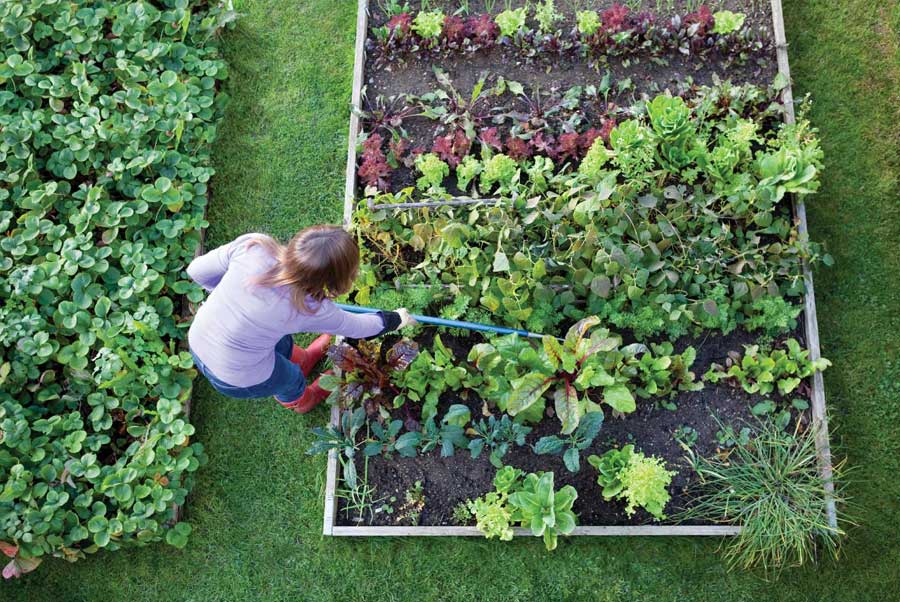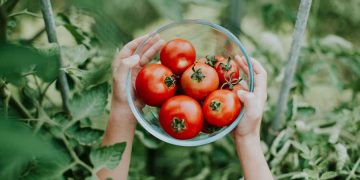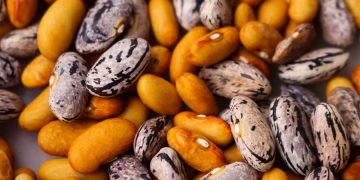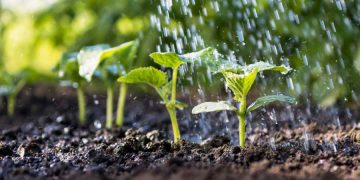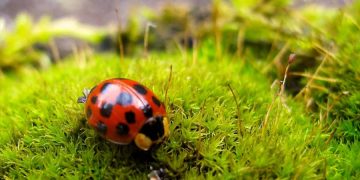Selecting the optimal placement of your vegetable garden is important for success. When it comes to choosing a site to plant your vegetable garden, understanding the essential key components including sunlight, water and good soil will ensure your garden bounty. Picking fresh vegetables from your own garden or patio container can be very rewarding. In addition, you may discover new foods to add to your plate and may influence others to try new vegetables.
To the new gardener, a word of caution: start small. Consider how much time and space you have available and do not start with a garden that may be more than you can manage. Depending on the amount of space and site conditions, you can consider a container vegetable garden, a small area with just a few plants, or a larger garden with a variety of vegetables.
Vegetables need sunlight in order to produce succulent fruits such as the tomatoes or fleshy stems like asparagus. Plants use sunlight to convert carbon dioxide and water into food through the process of photosynthesis. When selecting a site, find an area that gets at least eight to 10 hours of full sun per day. West or south-facing sites are preferred. Vegetable production declines as sunlight decreases, yet some early season crops such as radish or lettuce may be able to be produced in an area that receives part day of shade.
Before you select the site, observe it for a few days to determine the amount of sunlight it receives. Is there sun in the early morning? Is the site in the shadow of neighboring trees, shrubs, fences or other structures? At noon, is the entire area in full sun? What are the light conditions at 2 p.m. and 4 p.m.? Take time to observe and make notes in order to locate the garden in the best area of your landscape. Keep in mind if you are observing sun patterns in winter or early spring that the sun will be more directly overhead in summer, somewhat changing where sunlight appears during the growing season.

Plants also require water for growth and food production. Locate your garden where you have access to a clean and consistent water source. You cannot depend on rain to consistently provide adequate moisture, especially when establishing young plants or during the drier part of summer. In addition, gardens closer to the house are more visible and you won’t succumb to the “out of sight, out of mind” problems that occur in the heat of the summer.
The soil needed for growing vegetables should be fertile and well-drained. A quick and easy drainage test is to dig a bucket-sized hole and fill it with water. Water should be completely drained from the hole within 24 hours. If there is still standing water, you should either select a new site or consider options such as raised bed gardens or improving the drainage by contouring the beds, allowing excess moisture to move away from the site. The pH should be in the range of 6.2 to 6.8 (slightly acid soil). A soil test will provide this information. The results of your soil test will indicate the necessary amendments such as fertilizers or organic matter that are needed for good vegetable production.
Planting under or near a black walnut tree (Juglans nigra) is not recommended because all parts of the tree produce a chemical called juglone, which is toxic to certain vegetables, especially tomatoes, potatoes, eggplant and peppers. There are some vegetables that are not affected by juglone. These include snap and lima beans, onions, beets and parsnips.
If you face challenges locating the ideal site, do not despair. There are many gardening options such as container gardening or elevating the garden above ground level and creating a raised garden. You can grow potatoes in a trash can, herbs in a bag of top soil or tomatoes in a hanging basket. Wherever you find a sunny location, there is the possibility of growing vegetables.

